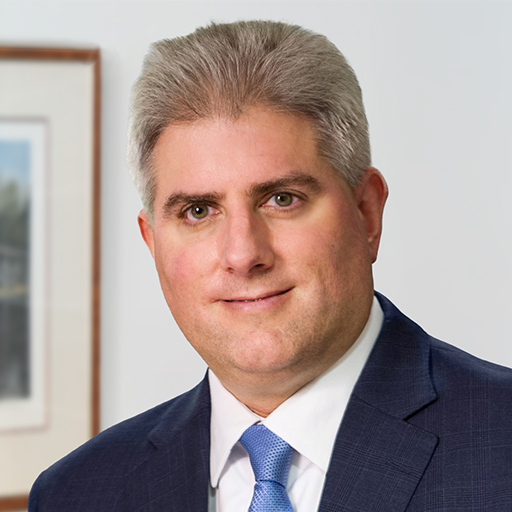 As explained in a prior article, the sweeping tax reform bill, commonly known as the Tax Cuts and Jobs Act of 2017 (TCJA), temporarily doubles the combined gift and estate tax exemption and the generation-skipping transfer (GST) tax exemption from $5 million to $10 million (adjusted for inflation after 2011). For 2018, the exemption is $11.18 million per person. The exemption will increase to $11.4 million in 2019. This doubled exemption will adjust for inflation each year and will remain in effect until December 31, 2025. If Congress doesn’t act before 2026, the law will sunset and the exemptions will revert back to the $5 million level (adjusted for inflation).
As explained in a prior article, the sweeping tax reform bill, commonly known as the Tax Cuts and Jobs Act of 2017 (TCJA), temporarily doubles the combined gift and estate tax exemption and the generation-skipping transfer (GST) tax exemption from $5 million to $10 million (adjusted for inflation after 2011). For 2018, the exemption is $11.18 million per person. The exemption will increase to $11.4 million in 2019. This doubled exemption will adjust for inflation each year and will remain in effect until December 31, 2025. If Congress doesn’t act before 2026, the law will sunset and the exemptions will revert back to the $5 million level (adjusted for inflation).
Shortly after passage of the TCJA, questions arose regarding taxpayers who utilize the doubled exclusion during their lifetime and then die in 2026 or later, when the exclusion reverts to the former $5 million (adjusted for inflation). This could lead to inconsistent tax treatment arising as a result of the temporary nature of the increased exemption amount. Therefore, the statutory sunset of the higher exemption amount and reversion to the lower amount could retroactively deny taxpayers who die after 2025 the full benefit of the higher exclusion amount applied to previous gifts. This scenario has been dubbed a “clawback” of the exemption.
“Clawback” Example
Jim is about to retire and has an estate worth $15.18 million. In 2018, Jim decides to gift $11.18 million to Dynasty trusts for his 3 grandchildren. Jim will rely on the remaining $4 million, social security payments, and his pension to get him through his retirement years. Jim would owe no gift tax in 2018 because his combined gift and estate tax exemption is $11.18 million.
Jim then dies in 2026, when the combined gift and estate tax exemption has reverted back to $5 million (adjusted for inflation). We can assume that the inflation adjusted exemption amount will be about $6 million in 2026. If Jim still has $4 million in assets at death, his gross estate would be $15.18 million after adding in the $11.18 million taxable gift that Jim made in 2018. Would Jim’s estate owe tax on $9.18 million, the difference between his taxable estate ($15.18 million) and the 2026 exemption amount ($6 million)? If yes, then Jim’s estate would be hit with an estate tax bill of approximately $3.67 million! On November 23, 2018, the IRS published proposed regulations to address the “clawback” problem. The Regulations indicate that the IRS will not seek to “clawback” into the estate the taxable gifts that the decedent made when the exemption covered those gifts. These proposed regulations apply to gifts made after 2017 and the estates of persons dying after 2017.
So, in Jim’s example, his estate would not owe estate tax on the amount he gifted in 2018. Of course, in 2026, he would not have any remaining exemption to use for his $4 million in assets, so his estate would owe tax on the entire $4 million remaining at death – a tax bill of about $1.6 million. It is easy to see that these new Regulations are quite favorable to the taxpayer!
Estate Planning Opportunities: What Clients Need to Know
With the uncertainty of “clawback” soon to be removed, we recommend that clients with taxable estates consider making large gifts to reduce the size of their estates and take advantage of the increased federal exemption amounts. This is especially important for clients in Maryland and the District of Columbia. These jurisdictions have stand-alone state estate taxes with exemption amounts lower than the federal exemption, and do not impose a gift tax; which makes these gifts of even greater importance.
However, prior to making any gift, it is vital to conduct an analysis of the income tax consequences of the gift. This is crucial because a recipient of gifted assets takes the donor’s basis for federal income tax purposes (a “carry-over basis”). Whereas, the basis of assets which are subject to the federal estate tax, and received as a result of a person’s death, is equal to fair market value at the date of the decedent’s death (a “stepped-up basis”).
Finally, clients should know that time is of the essence and should consider taking advantage of the increased exemption amount sooner rather than later because Congress could change the law again prior to the sunset date and those who have not used the larger exemption amount will have lost the opportunity to do so. Keep in mind also that large gifts often take some time due to planning, appraisals, and preparation of trusts and other documents.
David A. Lucas is an Attorney in Miller, Miller & Canby’s Estates & Trusts and Business and Tax Practice Groups. David is committed to providing his clients with a well-crafted estate plan so they may avoid probate, protect their assets and legacies, and provide for the security of their loved ones. He takes a special interest in ensuring that the dreams parents have for their children and grandchildren are not lost to taxes, poor planning, or procrastination. He speaks frequently on a variety of estate planning topics to both the general public and private groups.
David has focused his practice on helping families preserve their financial wealth and legacies for future generations through the use of Trusts, Wills, Powers of Attorney, Advance Medical Directives, Living Wills, and other estate planning strategies.
Contact David to discuss your estate plan to take advantage of the laws available today and ensure flexibility for future changes. For more information on Miller, Miller & Canby’s Estates & Trusts Practice, click here.







Share this Article: